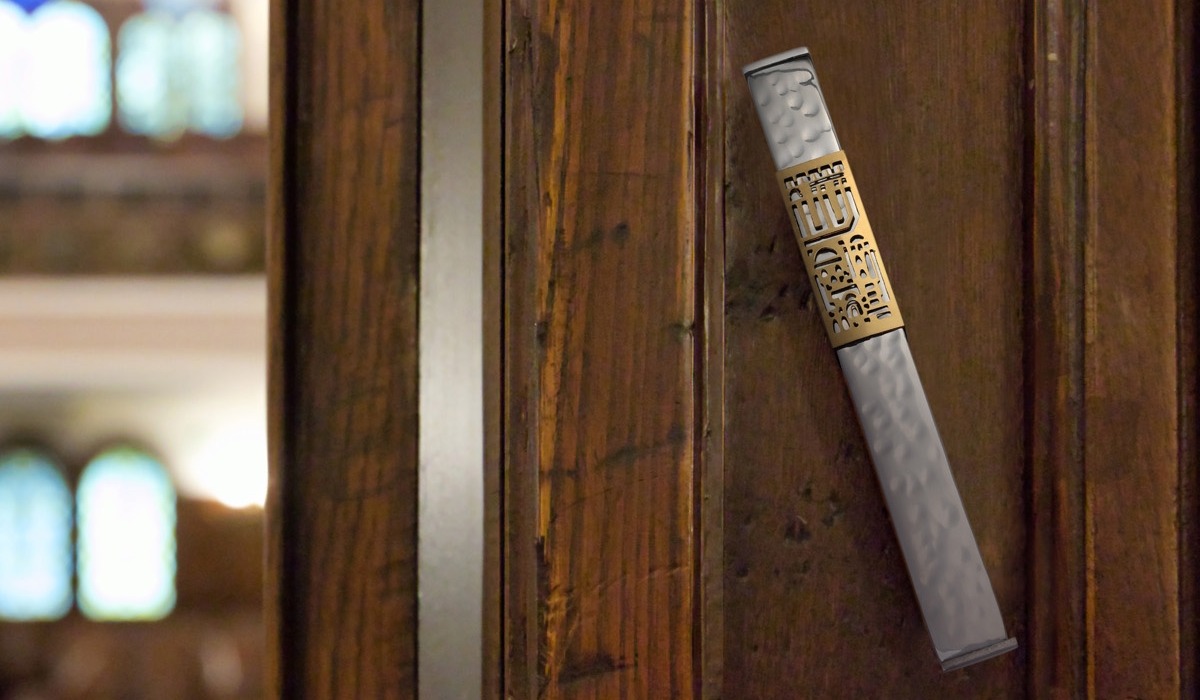
Physical Components of a Mezuzah
At its core, a mezuzah consists of two parts: the scroll and the mezuzah case. Each element has specific religious and practical significance.
The Klaf (Parchment Scroll)
The most important part of a mezuzah is the klaf—a small piece of parchment made from kosher animal skin.
Handwritten in beautiful calligraphy, the klaf includes two Torah passages: Deuteronomy 6:4–9 and 11:13–21. These verses form the Shema prayer and emphasize the unity of God and the importance of loving and serving Him wholeheartedly.
Only a trained sofer (scribe) can write the klaf or mezuzah scroll. Every letter must be perfect. A single smudge or missing character can render the mezuzah invalid—or "pasul."
The Mezuzah Case or Cover
While the scroll is the spiritual heart of the mezuzah, the mezuzah case protects it from weather, dust, and wear.
Mezuzah cases range from simple plastic covers to elaborate works of art made from wood, glass, silver, and ceramics. While the case isn’t required to be ornate, many families use it to express their personal style or heritage.
Traditional Mezuzah Designs
Historically, mezuzah cases often featured inscriptions like the Hebrew letter Shin (ש)—short for “Shaddai,” one of God’s names. This not only signifies divine protection but also helps distinguish the mezuzah’s spiritual purpose.
In many communities, mezuzahs were historically simple, functional, and discreet—especially in times or places where Jews faced persecution.
Another traditional mezuzah design is sterling silver mezuzahs—a beautiful and artistic way to add Jewish tradition right to one's doorpost!
Contemporary Mezuzah Cases
Today, mezuzah cases reflect the diversity of Jewish expression. From sleek, modern designs in stainless steel to vibrant, hand-painted motifs from Israel, mezuzahs now blend tradition with creativity.
Artists worldwide craft mezuzah cases using local materials and cultural inspirations, making them cherished gifts for weddings, housewarmings, or bar and bat mitzvahs.

The Sacred Text Inside a Mezuzah
The Shema Yisrael Prayer
At the heart of the mezuzah is the Shema Yisrael—a central declaration of Jewish faith. The prayer begins:
“Hear, O Israel: The Lord our God, the Lord is One.”
These words affirm monotheism and the covenant between God and the Jewish people. The rest of the passage teaches love, commitment, and the importance of teaching these values to future generations.
The Sofer’s Role in Creating a Kosher Mezuzah
Writing a kosher mezuzah is a sacred art. A sofer trains for years to master the intricate Hebrew lettering, deep laws, and spiritual mindfulness needed for this task. Each scroll is written with a quill and special ink. Before writing, the sofer often recites a prayer, dedicating the act to God. Once completed, the scroll is carefully rolled and inserted into the mezuzah case—ready to guard and bless the home.




















